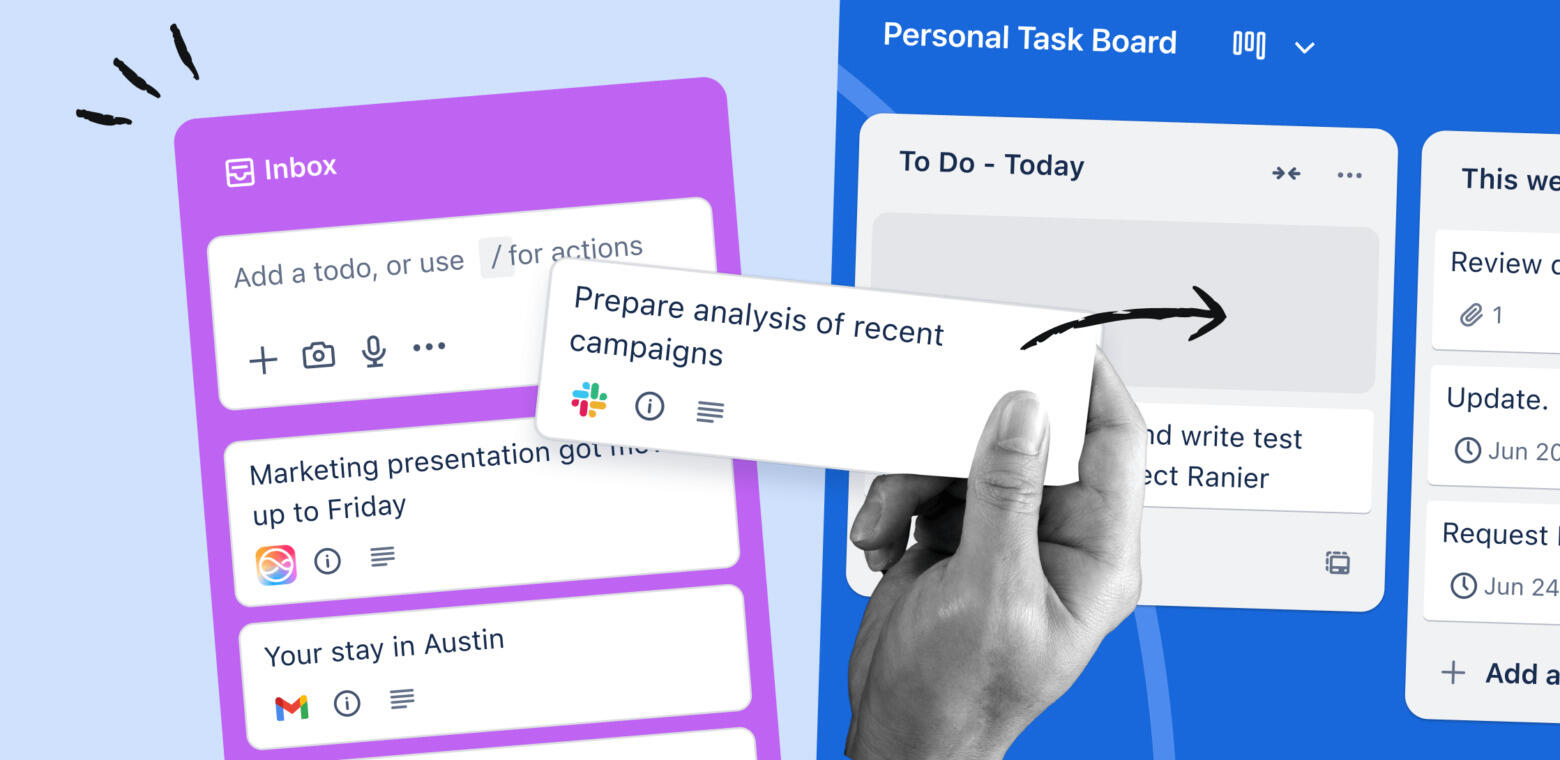How to export from Trello and import into better project tools
Contents
Trello has long been the go-to tool for teams seeking a simple, intuitive way to manage tasks via Kanban-style boards. But in May 2025, Atlassian rolled out a sweeping redesign - overhauling layout, fonts, navigation, and even removing features like inline commenting. Instead of streamlined efficiency, many users now find themselves clicking more to do less.

The backlash has been fierce. Tech news sites like The Register labeled it "possibly the worst in tech history," echoing the frustration churned across user communities.
"This update isn't just inconvenient; it severely disrupts workflows we've carefully optimized around Trello's previous interface."
"This new design is awful. Not just runs heavier on my PC for some reason, but also awful to use. … New UI is SHIT! I have to make more clicks to do the same tasks."
"What can I do to go back to the old Trello? This new update is terrible and I can't work like that! I can't even see all the boards, the new format is very bad and it's FREEZING A LOT!"
"We use Trello in our team, and I am shocked how bad the new UI is. For starters: … it seems that a ton of the functionality is missing."
"Hate the new rollout. Had to re‑train my entire staff and answer endless 'where are my automations??' questions for weeks already. Worst rollout I've ever seen."
Users are describing the interface as increasingly nested and sluggish, resulting in confusion and productivity loss. In some cases, the comment area is now hidden to the right instead of being easily visible under cards, and navigation has become a "scroll mania" experience (community.atlassian.com).
On Reddit, a passionate "open letter to Trello leadership" captures the frustration succinctly:
"This is the worst UI update I've ever seen, including Windows 8."
Adding salt to the wound, Atlassian appears to be repositioning Trello toward personal productivity over teamwork. As one community comment puts it, the aim might be to direct business users toward Jira instead. (community.atlassian.com, reddit.com)
If your team's workflow has been disrupted - or if you're simply tired of fighting more clicks than accomplishments - it may be time to explore a different path. In the following sections, we'll walk through how to migrate away from Trello smoothly, preserving your work - and your sanity.
1. Why people migrate away from Trello
Trello's original simplicity is what made it so popular. But for many teams, it no longer fits. Here are some common reasons users start looking for alternatives:
- Interface changes that make it harder to find what you need
- Too many essential features require third-party add-ons
- Lack of reporting, workload tracking, or advanced collaboration tools
- Limitations on the free plan, especially for growing teams
These issues are especially frustrating for teams that just want to focus on getting work done without constantly reconfiguring tools. Trello still works well for basic task lists, but once you scale or need better visibility, its limits become more apparent.
To elaborate, the interface changes over time have introduced more complexity, making it less intuitive for new users and slowing down experienced ones. What was once a straightforward drag-and-drop board now includes nested menus and less accessible features, which can hinder quick task management.
The reliance on third-party add-ons means that many core functionalities, such as time tracking or advanced reporting, are not available out of the box. This leads to fragmented workflows and dependency on external tools that may not integrate seamlessly.
Reporting and workload tracking are crucial for project oversight, but Trello's native capabilities in these areas are limited. Without built-in analytics, teams often struggle to get an accurate picture of progress or resource allocation.
Finally, the free plan's limitations, including caps on boards, power-ups, and automation runs, can quickly become a bottleneck for growing teams. Upgrading to paid plans can be costly and still may not address all the needs of a dynamic team.
2. What to look for in a Trello alternative
Before you jump into a new platform, it's worth listing out what matters most to your team. Consider:
- Support for the same visual layout (boards, lists, cards)
- Built-in tools like time tracking, workloads, calendars, and reports
- Simple onboarding and intuitive UX
- Pricing that scales fairly with your team

Breeze was built with these exact concerns in mind - offering the familiar board experience, but adding more power under the hood for teams that need it.
Beyond these basics, look for a tool that supports seamless collaboration features such as real-time updates, comment threads, and easy file sharing. Integration capabilities with your existing software stack can also save time and reduce friction.
Another factor is the ability to customize workflows without complex setups. Teams appreciate tools that adapt to their processes rather than forcing them into rigid structures.
3. How to export your data from Trello
Trello lets you export board data in JSON format, and Business Class users can export in CSV. You'll get card titles, descriptions, comments, checklists, and attachments. However, automations and some metadata don't always transfer cleanly.
JSON exports include full card content, checklists, comments, and metadata like labels and due dates. However, it can be hard to read or map manually unless you're using a compatible import tool. CSV exports are easier to read but may omit complex data like nested checklists or attachments.
Also keep in mind that exported files don't include automations (like Butler rules), integrations (like Slack or Gmail), or power-ups. You'll need to recreate these manually in your new tool.
When preparing your export, it's a good idea to review the data carefully to ensure all critical information is captured. Some attachments may be stored externally, so verify that linked files are accessible or downloaded separately.
Here's a step-by-step breakdown of the most common ways to export data from Trello:
1. Export as JSON (Free plan)
The JSON export option lets you download your board data as a raw JSON file, which includes card titles, descriptions, comments, checklists, and metadata. This is available on the free plan and is useful for importing into compatible tools.
- Open the Trello board you want to export
- Click the three-dot menu in the upper right corner
- Click More
- Choose Print and Export
- Click Export as JSON
- The data will open in a new browser tab as raw JSON
- Right-click and save the file (Save Page As > .json)
2. Export as CSV (Business Class and higher)
- Make sure you're on a Business Class or Enterprise Trello workspace
- Open the desired board
- Click the board menu (three-dot icon)
- Go to More > Print and Export
- Select Export as CSV
- A CSV file will download automatically
3. Export using Print View (Manual method)
- Open the board
- Click the three-dot menu > More
- Select Print and Export
- Click Print
- Use your browser's Print to PDF functionality to save a snapshot
4. Export using third-party Power-Ups
There are several Power-Ups like Board Export or Bridge24 that offer richer export formats, including Excel, PDF, and full board snapshots. These usually require authorization and may have usage limits or pricing tiers.
5. Export via Trello API (Advanced)
- Generate an API key and token from Trello's developer portal
- Use the
/boards/<board_id>endpoint to retrieve JSON data - You can script this in curl, Python, or other tools for automation
If you're exporting for migration to Breeze, the JSON and CSV options are best supported. Breeze's native Trello importer handles both formats.
4. Importing your Trello boards into Breeze
Breeze is a natural fit for teams coming from Trello. It keeps the same clean board layout, but adds helpful built-in features like time tracking, budgets, workload, and reports - without needing extra plugins.

Breeze has a native Trello import that makes switching fast and simple. You can import your cards, comments, checklists, and attachments directly into any Breeze project.
To import your Trello board into Breeze:
- Log into Breeze and go to the project where you want the data
- Click on "Import" and choose Trello
- Authorize access to your Trello account
- Select the board you want to import
- Review and confirm the data mapping
- Breeze will pull in cards, descriptions, checklists, comments, due dates, and attachments
The process usually takes just a few minutes depending on board size. Once done, your team can start working in Breeze right away.
Breeze also handles mapping of labels and members to ensure your team's context is preserved. If you encounter any issues, Breeze's support is available to assist with troubleshooting.
5. Tips for a smooth team transition
- Let your team know early and explain why you're switching
- Start by importing one or two boards first to test the setup
- Host a quick walkthrough or screen share to show people around
- Recreate any automations or reminders manually if needed
- Keep your old Trello boards archived just in case
Transitions can feel disruptive, especially for larger teams. To keep things running smoothly, designate a "migration lead" who can test the setup and answer questions. Document the key differences between Trello and Breeze so team members know what to expect.
Encourage open communication and feedback during the transition period. This helps identify any pain points early and allows for timely adjustments. Providing training sessions or helpful resources can also boost confidence and adoption.
Remember, change takes time. Celebrate small wins as your team adapts to the new system and emphasize the long-term benefits of improved workflows and visibility.
6. Final thoughts
You don't have to stay stuck with a tool that no longer fits. Breeze makes it easy to move your work over and keep your team productive. The built-in Trello import helps you bring everything with you - and the extra features help your team grow.
Switching project management tools isn't just about moving tasks - it's about improving how your team works. Breeze offers a clear path forward: same simple interface, but better visibility, smarter tracking, and fewer external dependencies.
If you've outgrown Trello, Breeze gives you room to grow without overwhelming you. It's designed to feel familiar but more capable, especially for teams that need a little more than just boards and cards.
Ultimately, the right tool can transform how your team collaborates and delivers. Taking the time to migrate thoughtfully sets you up for success and helps avoid the frustrations that come with outgrowing your current platform.
Ready to move on? Try Breeze for free and see the difference.








